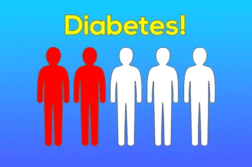ORLANDO, Fla. (Ivanhoe Newswire) — In the United States, nearly one in three children are already infected with cytomegalovirus or CMV, by age five. The CDC says, over half of adults have been infected with it by age 40. Once it is in a person’s body, it stays there for life and can reactivate. At any time, a person can also be re-infected with a different strain of the virus. Most people with the infection have no symptoms and aren’t aware that they have been infected.
Cytomegalovirus commonly known as CMV, is closely related to the viruses that cause chickenpox and mononucleosis, or mono.
The symptoms of a congenital CMV infection vary. Most babies infected before birth usually show no symptoms after delivery. Those who do may be born prematurely, have a low birth weight, jaundice, or microcephaly, which is a small head.
If not treated properly and in a timely manner, it could lead to premature hearing loss.
Kenneth Alexander, MD, PhD, Chief of the Division of Infectious Diseases, Nemours Children’s Hospital says, “The challenge is, if we wait too long, those hearing pathways don’t develop. If children are not treated, then, doing things like cochlear implants doesn’t work very well. Furthermore, even if it’s not complete hearing loss, these children have significant language delays.”
Florida is one of the latest states, along with Minnesota and New Jersey, to pass legislation that requires testing for congenital CMV.
Doctor Alexander explains, “The bill requires that any baby that fails their newborn hearing screen be tested for cytomegalovirus. If that baby tests positive for cytomegalovirus, it tells us how we have to manage that child.”
Currently, there’s no vaccine to prevent CMV. Washing hands well and often can help reduce the risk of infection. And a mother who has a CMV infection shouldn’t stop breastfeeding her baby.
Experimental vaccines are being tested for women of childbearing age. These vaccines may be useful in preventing CMV infection in mothers and infants and reducing the chance that babies born to women who are infected while pregnant will develop disabilities. Seven states require each newborn that fails the newborn hearing test to be tested for congenital CMV: Connecticut, Florida, Iowa, Kentucky, New York, Utah, and Virginia.
Contributors to this news report include: Adahlia Thomas, Producer; Roque Correa, Editor and Videographer
Sources:
https://www.mayoclinic.org/diseases-conditions/cmv/symptoms-causes/syc-20355358
https://www.cdc.gov/cmv/overview.html
https://kidshealth.org/en/parents/cytomegalovirus.html
https://kidshealth.org/en/parents/cytomegalovirus.html
https://www.mayoclinic.org/diseases-conditions/cmv/symptoms-causes/syc-20355358 /
CRITICAL FACTS ABOUT CMV: HEARING LOSS IN BABIES
REPORT #2978
BACKGROUND: Cytomegalovirus, or CMV, is a common virus that your body retains for life once infected. It rarely causes problems in healthy people, so most people don’t even know they have it. Being pregnant or having a weakened immune system, however, is cause for concern. Women who develop an active CMV infection during pregnancy can pass the virus to their babies, who might then experience symptoms. People with weakened immune systems, especially people who have had an organ, stem cell, or bone marrow transplant, the CMV infection can be fatal. The virus spreads from person to person through body fluids, such as blood, saliva, urine, semen, and breast milk. There are medications that can help treat the symptoms, but there is currently no cure.
(Source: https://www.mayoclinic.org/diseases-conditions/cmv/symptoms-causes/syc-20355358)
CAUSES AND DIAGNOSIS: Over half of the adults in the U.S. have CMV in their body by age 40. A healthy immune system can easily control the virus, but it can make people who have weakened immune systems sick. CMV is not typically caught from casual contact, rather by touching your eyes, nose, or mouth after having contact with an infected person’s saliva, semen, vaginal fluids, blood, urine, or breast milk. CMV spreads easily in places with many young children, like day-care centers, so anyone who spends time there is at higher risk of getting it. There are different types of CMV infection, the first being congenital. This is when a baby gets CMV from its mother before birth. The second type is primary. This is the first time someone gets CMV. It usually doesn’t cause symptoms, but some people may have signs that look like mononucleosis.
The third type is reactivation. An infection that has been dormant can become active again when your immune system is weakened. It can also happen if you have advanced HIV, are in treatment for cancer, or have an organ transplant.
(Source: https://www.webmd.com/hiv-aids/guide/aids-hiv-opportunistic-infections-cytomegalovirus)
ADVANCES IN CMV TREATMENT: The FDA approved Livtencity (maribavir) as the first drug for treating adults and pediatric patients with post-transplant CMV infection/disease that does not respond to available antiviral treatment. Livtencity works by preventing the activity of human cytomegalovirus enzyme pUL97, thus blocking virus replication. “Transplant recipients are at a much greater risk for complications and death when faced with a cytomegalovirus infection,” said John Farley, MD, MPH, director of the Office of Infectious Diseases in the FDA’s Center for Drug Evaluation and Research. In the study, 352 transplant recipients with CMV infections, who did not respond to treatment, randomly received Livtencity or treatment assigned by a researcher for up to eight weeks. The study compared the two groups’ plasma CMV DNA concentration levels at the end of the eighth week, with efficacy defined as having a level below what is measurable. Of the 235 patients who received the new drug, 56 percent had levels of CMV DNA below what was measurable versus 24 percent of the 117 patients who received an investigator-assigned treatment. The most common side effects included taste disturbance, nausea, diarrhea, vomiting, and fatigue.
* For More Information, Contact:
Margot Winick, Public Relations
Free weekly e-mail on Medical Breakthroughs from Ivanhoe. To sign up: http://www.ivanhoe.com/ftk



